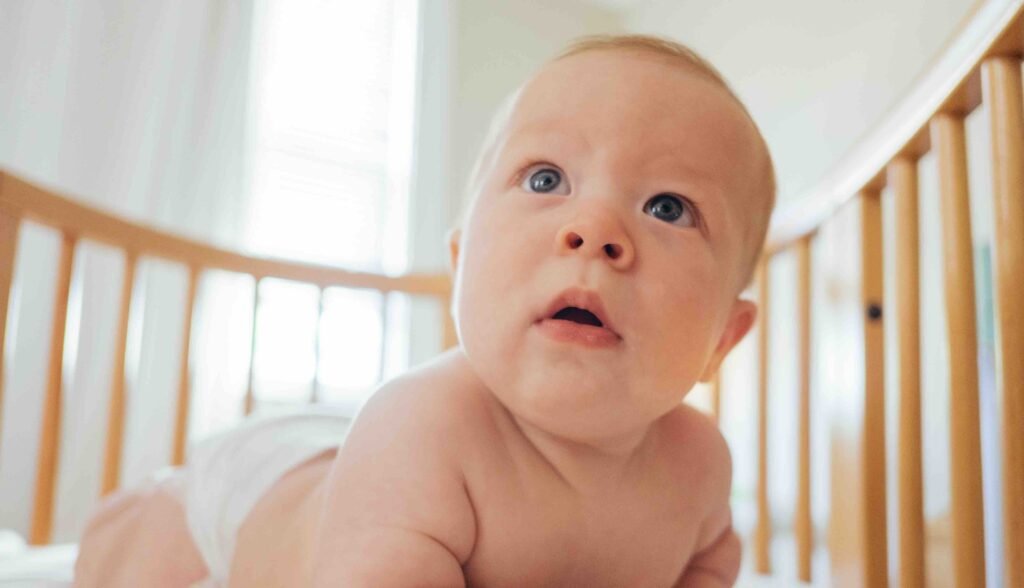Baby Wakes Up When Put Down
How often have you faced this struggle? You rock your baby to sleep in your arms until he’s out, and then when he’s in his crib, he wakes up and will just not go back to sleep. Parenting can be confusing for everyone, no matter how experienced they are. Why on earth would a baby who is peacefully sleeping wake up the minute he is put into the bed?
There is a logical explanation for your problem.
And there is an easy way to RESOLVE this.
It's not that you're doing anything wrong or that your baby is acting strangely. Your baby has various systems that inform him of the change in his environment.
Vestibular System
The vestibular system is in charge of informing our brains about our movement and balance, specifically head movement. This system is primarily a system of organs in our ear. This system provides information about where our body is and helps us with balance and stability through movement.
The vestibular system is one of the first senses to fully develop by 5 months in utero. Mom's movements provide sensory information to the vestibular system and the developing brain of the baby. The information received by this system provides our sense of spatial orientation.
This system detects when our balance or spatial orientation has shifted. The movement is then communicated to our brain. And that is one the reasons why a peacefully sleeping baby wakes up when put in the crib.
Proprioceptive System
The proprioceptive system is a continuous feedback loop that communicates how our bodies move between sensory receptors in the body and our nervous system. It tells us where our body parts are in relation to other body parts, as well as the rate and timing of movement and the movement of our muscles and joints. Proprioception in your baby is present at birth but is still developing. As babies grow, their proprioceptive system picks up new information based on the baby's movements and growth.
Consider this: even if you close your eyes, you can tell where your left foot or right thumb are in relation to your other body parts even if we can`t see them. Now you are getting to understand the various pieces of puzzle that connect baby waking up when he is put in the crib.
The mind-body connection
Your baby knows where their head, body, and limbs are in space and in relation to each other thanks to sensory input from their inner ear and sensory receptors in their skin, muscles, and joints, also known as their vestibular and proprioceptive senses. They also recognize when their bodies move and when their position has changed. So, yes, when you put your baby down, no matter how gently, slowly, or calmly you do it, their brains and bodies know. The sudden change in position is detected by your child's vestibular sense. Proprioception informs them that their body is in a different position in relation to their environment through sensory inputs from the skin, joints, and muscles.
HOW TO MOVE A SLEEPING BABY WITHOUT WAKING THEM
When you put your baby down, their brain and body will notice. You feel like you're playing a real-life game of "Operation" when trying to move your sleeping baby to the crib. I hear you! As a sleep consultant, I've seen it all, and I'm here to share some tried-and-true tips to help you master this delicate art. Let's dive in!
Timing is Everything
Wait until your little one is in deep sleep. Look for slow, steady breathing and relaxed, floppy limbs. If your baby's still in that twitchy, active sleep phase, give it a few more minutes.
Set the Stage
Before you even think about the transfer, make sure the room is ready. Dim the lights, turn on the white noise (if you use it), and ensure the crib is prepped and cozy.
The Gradual Approach
Don't rush from the rocking chair to the crib in one swift move. Take your time. Stand up slowly, pause for a moment, then start your approach to the crib. This gives your baby time to adjust to the movement without fully waking.
Mind the Temperature
Our body heat is like a cozy blanket for babies. To avoid shocking them with the cooler crib, try holding them slightly away from your body for a minute before the transfer. It helps them adjust to the room temperature.
The Gentle Descent
Here's where the real magic happens. Lower your baby into the crib bottom-first, then gradually lay down their head and shoulders. It's like you're unrolling a delicate scroll – slow and steady.
Keep Contact
Once your baby's in the crib, keep your hands on them for a moment. This maintains that sense of security and can prevent the startle reflex from kicking in.
The Great Escape
Ready to remove your hands? Do it one at a time, and oh-so-slowly. If your baby stirs, pause and maybe give a gentle pat until they settle again.
The Exit Strategy
You've done it! Now, quietly back away from the crib. If you've got a creaky floorboard (we've all got that one!), remember where it is and avoid it like the plague.
Remember, every baby is different, and what works one day might not work the next. That's totally normal! The key is to stay calm and patient. If a transfer doesn't work out, take a deep breath and try again. You've got this!
And hey, if you're still struggling, don't hesitate to reach out for personalized advice. Sometimes, a few tweaks to your baby's overall sleep routine can make these transfers much easier.
You can schedule a free assessment HERE to learn more. Follow me here.
For the Love of Sleep...
Divya


